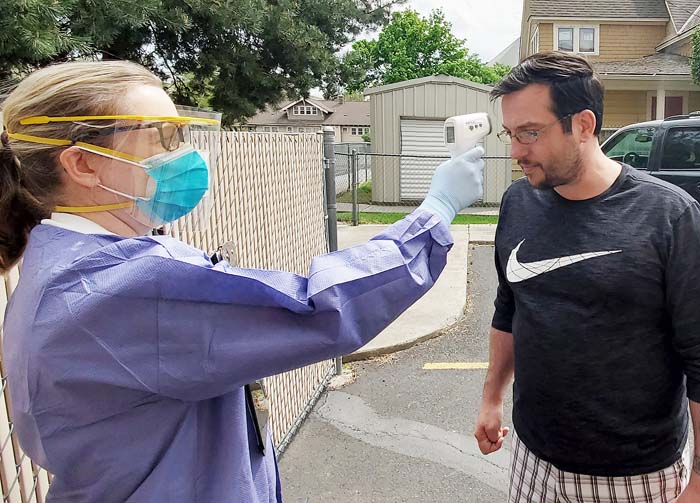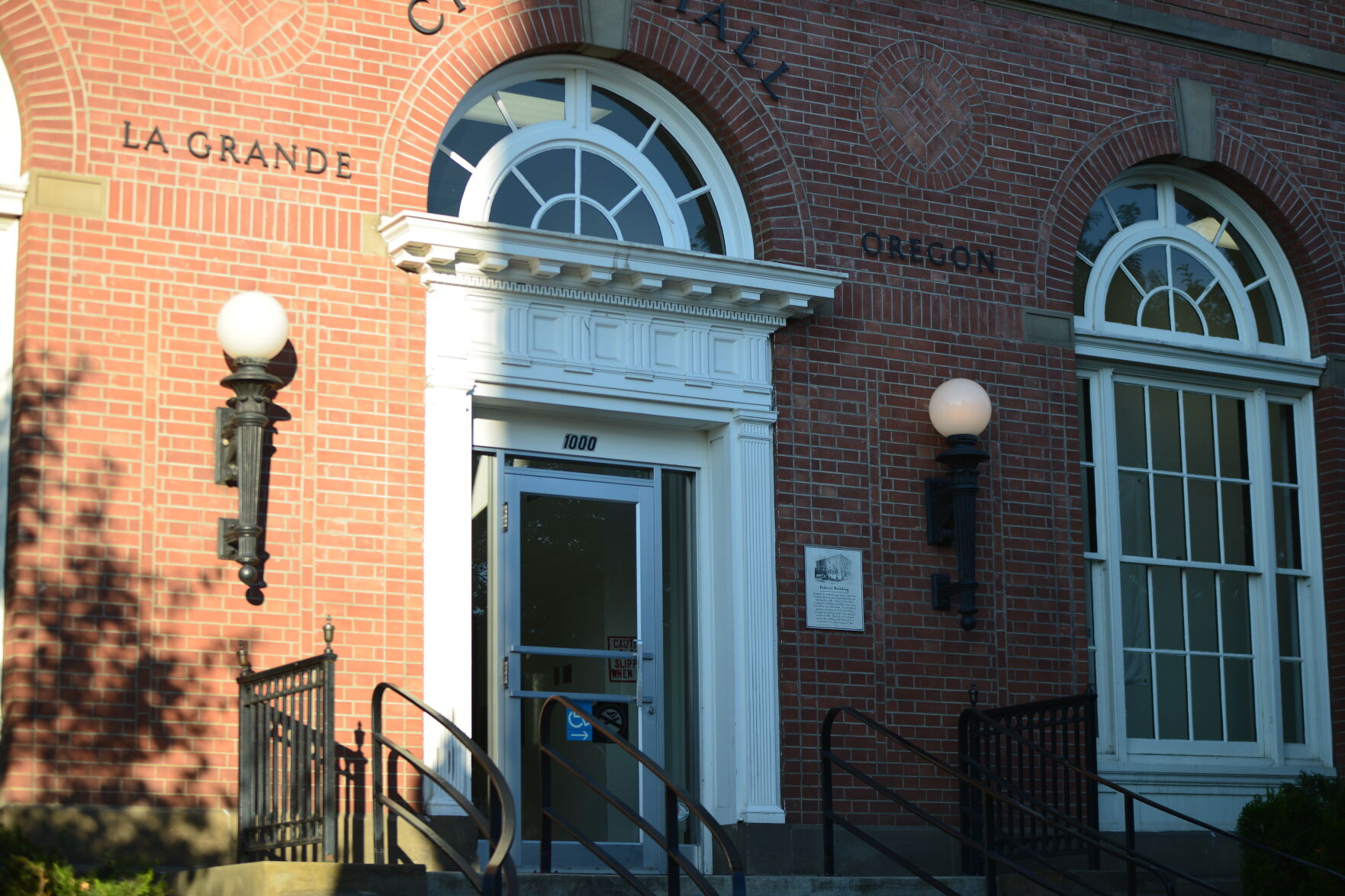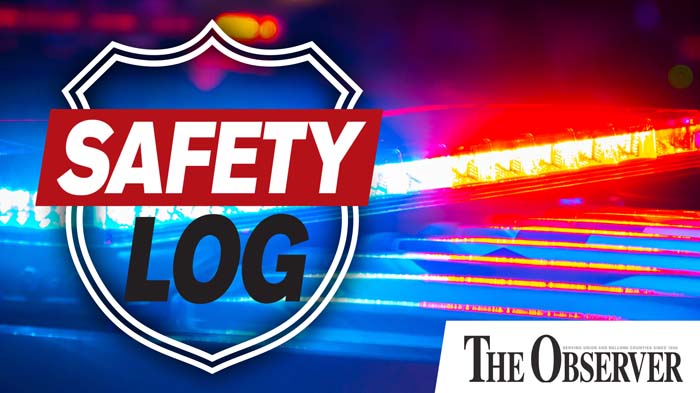Rural dental care crisis a side effect of COVID-19; changes ahead
Published 10:15 am Friday, May 15, 2020

- At a dental clinic in Pendleton, Ore., a staff member checks a patient's temperature before they enter.
Oregon’s dental care crisis is an often-overlooked consequence of COVID-19 shutdowns.
On March 20, Oregon Gov. Kate Brown ordered dentists to cease non-urgent care.
Statewide, closures have led to plummeting revenues, dental staff layoffs and furloughs and health crises for patients delaying care. And as clinics reopen, dentistry will look different, especially for rural communities.
According to Katie Harris, director of rural health and federal policy at the Oregon Association of Hospitals and Health Systems, statewide, dental providers faced an average 90% income reduction in March and April.
“It’s an especially hard time for rural dental providers,” said Harris.
And while revenue plunged, expenses escalated. Harris said the cost of personal protective equipment, or PPE, like masks and gowns, increased tenfold as demand outpaced supply.
The Oregon Dental Association does not yet have data on how many dental staff were laid off or furloughed, but experts estimate the number is “huge.” Some dental providers told the Capital Press the only thing keeping all their staff at work has been Paycheck Protection Program loans.
Even dental supply companies were impacted. Newberg’s top employer, dental manufacturing giant A-dec, confirmed it laid off more than 100 of its 1,000-employee workforce, along with furloughs and salary reductions.
Although most dental practices remained open for emergency procedures only, some small rural providers closed their brick-and-mortar offices, keeping dentists on-call for emergencies.
At Winding Waters Clinic in Enterprise, Ore., according to CEO Nic Powers, some patients puzzled by closures drove to Enterprise from more than two hours away to get emergency dental help during the pandemic.
Winding Waters is one of Oregon’s federally funded community health centers — known as CHCs. They bring integrated medical, dental and behavioral health services to vulnerable communities. More than 73% of CHC patients live below the poverty line, and three in four CHCs have rural sites.
But not every dental provider has been hit hard.
Advantage Dental, a provider with about two-thirds of its Oregon clinics in rural areas, has kept afloat because Medicaid provides financial stability.
“We’re fortunate we’ve weathered this storm financially pretty well so far,” said Tom O’Rourke, spokesman for Advantage Dental. “We haven’t had to lay off or furlough any of our employees.”
Experts say the pandemic compounded already-existing problems in rural oral care. According to studies by the National Organization of State Offices of Rural Health, nationwide, rural residents have lower dentist-to-population ratios, rural adults are nearly twice as likely to have missing teeth and rural residents are 7% more likely to have untreated tooth decay.
The pandemic, dental experts say, has compounded problems. Many people have postponed preventive care or early treatment that will have health consequences later.
May 1, the governor said care providers could resume 50% of in-person services, but Gail Nelson, CEO of Rinehart Clinic, a CHC in Wheeler, Ore., said people in her area, especially older adults, are still avoiding care because they don’t want to risk exposure to COVID-19.
“It’s like a ghost town around here,” said Nelson.
Brenda Johnson, CEO of La Clinica, a CHC in Medford, Ore., described recent cases in which patients who delayed their dental care came in for swelling or infections that had become systemic — affecting the whole body.
“Those are really serious health concerns. If people continue to delay, those things can become life-threatening,” Johnson said.
As Oregon reopens, dentistry will look different.
During lockdown, providers across Oregon turned to technology to provide “teledentistry,” phone calls or videoconferences where patients “see” their dentist on a computer, tablet or smartphone.
Dentists say they anticipate teledentistry will be a post-pandemic legacy and a major part of oral care for rural communities.
At One Community Health, a CHC in Hood River, Ore., CEO Max Janasik and business analyst Ian Schurr say their dentists have used teledentistry to talk with patients, look at imagery of teeth remotely and decide whether a patient needs to come in or can self-care at home.
“Sometimes, it’s as simple as the right education,” said Schurr.
He described a recent case in which someone’s gums were bleeding, but the problem was simply that they were over-brushing with a hard bristle brush.
One Community Health, Janasik said, has applied for a grant to get oral cameras, toothbrushes with tiny cameras and lights built in, which patients can use for teledentistry.
At Advantage Dental, Sharity Ludwig, director of clinical innovation, and Nikki Coe, director of operations, say dental care will likely change in other ways, too.
In the months to come, appointments will be staggered, waiting room seating will be spaced, gowns may change, dental staff will wear personal protective equipment (PPE), staff will check patients’ temperatures before they enter and those accompanying patients may be asked to wait outside.
Procedures will change, too. Aerosol procedures that suspend tiny droplets in the air, such as those using high-speed drills, will be limited in favor of other techniques because COVID-19 has airborne transmission.
“Dental providers have had it really hard,” said Janasik of One Community Health. “But I think some of the innovations coming out of this time are going to be real game-changers in serving rural communities.”





